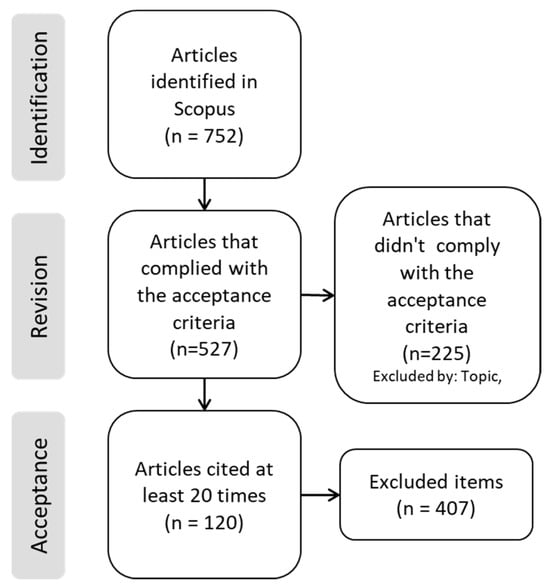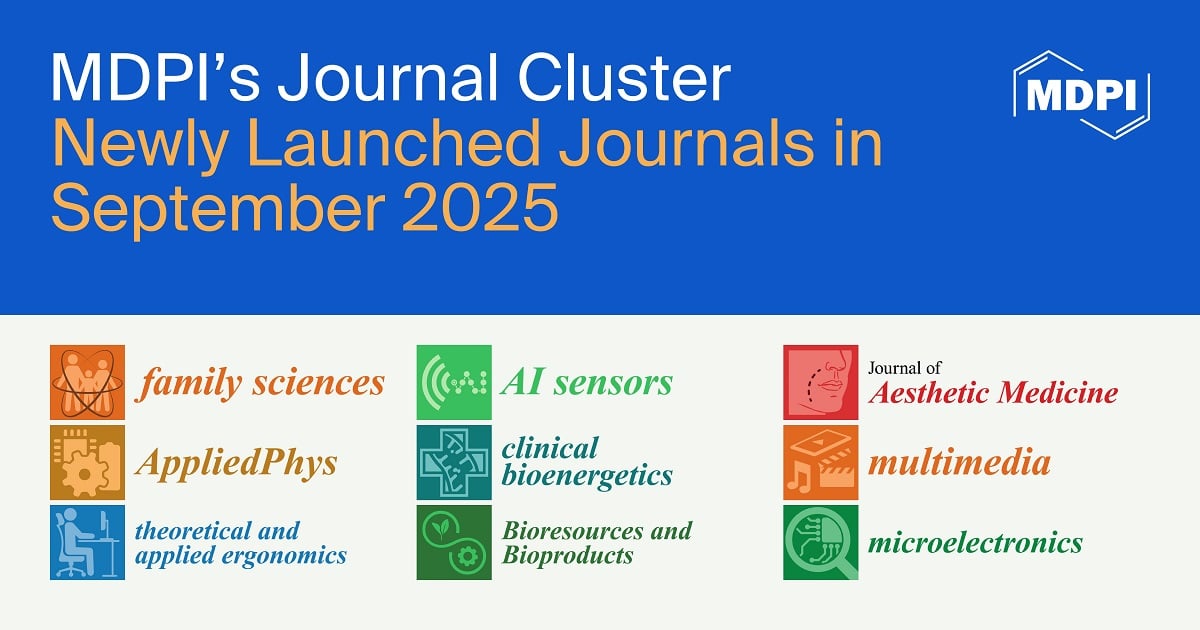Journal Description
Journal of Composites Science
Journal of Composites Science
is an international, peer-reviewed, open access journal on the science and technology of composites published monthly online by MDPI.
- Open Access— free for readers, with article processing charges (APC) paid by authors or their institutions.
- High Visibility: indexed within Scopus, ESCI (Web of Science), Inspec, CAPlus / SciFinder, and other databases.
- Journal Rank: JCR - Q2 (Materials Science, Composites) / CiteScore - Q1 (Engineering (miscellaneous))
- Rapid Publication: manuscripts are peer-reviewed and a first decision is provided to authors approximately 16.2 days after submission; acceptance to publication is undertaken in 3.5 days (median values for papers published in this journal in the first half of 2025).
- Recognition of Reviewers: reviewers who provide timely, thorough peer-review reports receive vouchers entitling them to a discount on the APC of their next publication in any MDPI journal, in appreciation of the work done.
Impact Factor:
3.7 (2024);
5-Year Impact Factor:
3.9 (2024)
Latest Articles
Assessing the Impact of Additive Manufacturing on Dental Clinical Workflows: A Process-Oriented Approach
J. Compos. Sci. 2025, 9(11), 579; https://doi.org/10.3390/jcs9110579 (registering DOI) - 28 Oct 2025
Abstract
Additive manufacturing (AM) is rapidly transforming clinical workflows in dentistry by enabling the customized, efficient, and digitally integrated production of dental devices. However, the existing literature lacks a process-oriented perspective on its technical and operational impact. This study aims to address this gap
[...] Read more.
Additive manufacturing (AM) is rapidly transforming clinical workflows in dentistry by enabling the customized, efficient, and digitally integrated production of dental devices. However, the existing literature lacks a process-oriented perspective on its technical and operational impact. This study aims to address this gap through a dual-phase analysis using the Input–Transformation–Output (ITO) framework, providing practical insights into the operational reconfiguration enabled by AM. The first phase examined materials, image acquisition methods, design and lamination software, printing technologies, and key parameters across each stage of the AM workflow. The second phase analyzed four clinical applications (dental models, crowns and bridges, occlusal splints, and surgical guides) supported by a structured fabrication protocol and scanning electron microscopy (SEM) of 18 resin samples to assess surface quality and process-related defects. In addition, for each application, a comparative process analysis with traditional workflows was conducted using ASME diagramming. The findings indicate that AM reduces cycle times, manual intervention, and supply chain reliance while enabling production models such as Make-to-Order (MTO) and Engineer-to-Order (ETO). Its integration also fosters decentralized, in-clinic manufacturing with enhanced autonomy, flexibility, and reduced lead times. Nonetheless, this study highlights persisting challenges, including post-processing quality control, training requirements, and cost-efficiency concerns in low-volume settings. A hybrid model combining AM with conventional methods emerges as a pragmatic strategy for clinical adoption.
Full article
(This article belongs to the Section Composites Manufacturing and Processing)
►
Show Figures
Open AccessArticle
Effect of Rubber Fiber Content on the Mechanical Properties of Calcareous Sand
by
Yuzhu Cheng, Hansheng Geng, Lei Wang, Yang Wang, Guoyue Yang, Yongsheng Xie, Linjian Ma and Chun Li
J. Compos. Sci. 2025, 9(11), 578; https://doi.org/10.3390/jcs9110578 (registering DOI) - 27 Oct 2025
Abstract
The application of rubber in geotechnical engineering has gained widespread popularity due to its potential to enhance the engineering properties of foundation fills while reducing environmental pollution. This study focuses on investigating the influence of the rubber fiber content on the performance of
[...] Read more.
The application of rubber in geotechnical engineering has gained widespread popularity due to its potential to enhance the engineering properties of foundation fills while reducing environmental pollution. This study focuses on investigating the influence of the rubber fiber content on the performance of calcareous sand by conducting a series of triaxial tests. The effects of the rubber fiber content and axial pressure on the strength, deformation, permeability, and particle breakage of rubber–calcareous sand were systematically studied. The experimental results reveal that increasing the rubber fiber content reduces the strength of rubber–calcareous sand, but it also inhibits the shear dilation and mitigates the occurrence of rupture surfaces: the sample with a rubber content of more than 10% only has shear-contraction. Both the rubber fiber content and axial stress contribute to the increased impermeability of rubber-modified calcareous sand, although they exhibit different characteristics. The relationship between the rubber fiber content and permeability coefficient is linear, while, under increasing axial stress, the permeability coefficient initially decreases rapidly; when the deviatoric stresses exceeds 1000 kPa, the decreasing rate slows down. Furthermore, rubber fiber significantly reduces particle breakage in calcareous sand. The relationship between the input energy applied to rubber-modified calcareous sand and the relative breakage rate of calcareous sand can be well-fitted with a power function. Samples with a higher rubber fiber content exhibit a lower relative breakage rate of calcareous sand under the same absorbed input energy. Through the research results of this paper, the best rubber ratio can be selected as the road filler in engineering practice to ensure both cost-effectiveness and environmental protection.
Full article
(This article belongs to the Special Issue Composite Materials for Civil Engineering Applications)
►▼
Show Figures
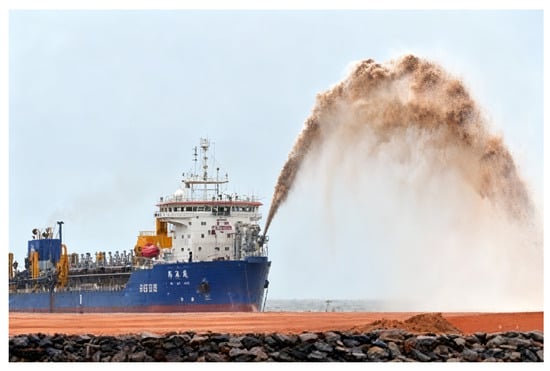
Figure 1
Open AccessArticle
Production and Mechanical Performance of Tantalum Strengthened Alumina–Zirconia Composites with Graphene Addition
by
Pavel Peretyagin, Oleg Yanushevich, Natella Krikheli, Yuri Pristinskiy, Nestor Washington Solis Pinargote, Anton Smirnov and Nikita Grigoriev
J. Compos. Sci. 2025, 9(11), 577; https://doi.org/10.3390/jcs9110577 (registering DOI) - 27 Oct 2025
Abstract
High density alumina–zirconia–tantalum ceramic–metal composites with the addition of 0.5 vol.% of graphene oxide were fabricated via a wet processing technique followed by spark plasma sintering. Scanning electron microscopy confirmed the even distribution of metal particles in the composite matrix. The thermal reduction
[...] Read more.
High density alumina–zirconia–tantalum ceramic–metal composites with the addition of 0.5 vol.% of graphene oxide were fabricated via a wet processing technique followed by spark plasma sintering. Scanning electron microscopy confirmed the even distribution of metal particles in the composite matrix. The thermal reduction of graphene oxide after consolidation at 1500 °C was proved using Raman spectroscopy. The engineered materials exhibit a fracture resistance of 16 MPa∙m1/2, which is 30% greater than in the reference ZTA ceramic composites fabricated using the same technology. That increase in fracture toughness could be down to a synergetic interaction mechanism; more specifically, crack trapping, renucleation and blunting, and elongated tantalum particles bridging. In addition to the above-mentioned mechanisms, tetragonal monoclinic phase transformation in zirconia is also an additional source of increased crack resistance in the developed composites.
Full article
(This article belongs to the Special Issue Mechanical Properties of Composite Materials and Joints)
►▼
Show Figures
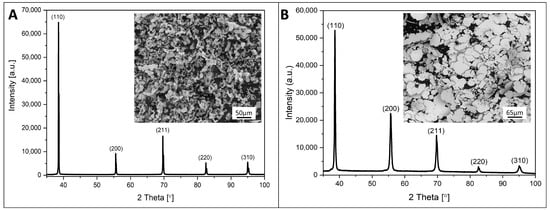
Figure 1
Open AccessArticle
Biomechanical Comparison of Titanium and CFR-PEEK Intramedullary Nails Using Finite Element Analysis
by
Mario Ceddia, Elisa Pesare, Giuseppe Solarino, Luciano Lamberti and Bartolomeo Trentadue
J. Compos. Sci. 2025, 9(11), 576; https://doi.org/10.3390/jcs9110576 (registering DOI) - 27 Oct 2025
Abstract
This study analyzes the biomechanical performance of intramedullary nails made of titanium alloy (Ti-6Al-4V) and carbon fiber-reinforced polyetheretherketone (CFR-PEEK) for the treatment of proximal femoral fractures, with a focus on their effects under different bone density conditions representing young and osteoporotic bone. Using
[...] Read more.
This study analyzes the biomechanical performance of intramedullary nails made of titanium alloy (Ti-6Al-4V) and carbon fiber-reinforced polyetheretherketone (CFR-PEEK) for the treatment of proximal femoral fractures, with a focus on their effects under different bone density conditions representing young and osteoporotic bone. Using finite element models and analyses simulating mid-stance gait loading and incorporating muscle forces adjusted for age-related reduction, the load transfer and stress distribution were evaluated, along with the osteogenic index (OI) as a measure of biological stimulus for bone healing. Results showed that titanium nails produced lower bone stresses but caused significant proximal stress shielding, particularly in osteoporotic bone, which could impair healing. In contrast, CFR-PEEK nails exhibited higher and more uniformly distributed stresses along the femoral diaphysis and shifted the osteogenic stimulus into a range promoting more mature bone formation in both young and elderly femora. The composite material’s elastic modulus closer to bone and its orthotropic fiber arrangement contributed to these effects. The study concludes that CFR-PEEK nails offer a promising alternative to titanium by reducing stress shielding and enhancing the biomechanical environment favorable for fracture healing, especially in osteoporotic patients. Future work will include dynamic loading conditions and experimental validation to optimize implant design.
Full article
(This article belongs to the Special Issue Polymer Composites and Fibers, 3rd Edition)
►▼
Show Figures
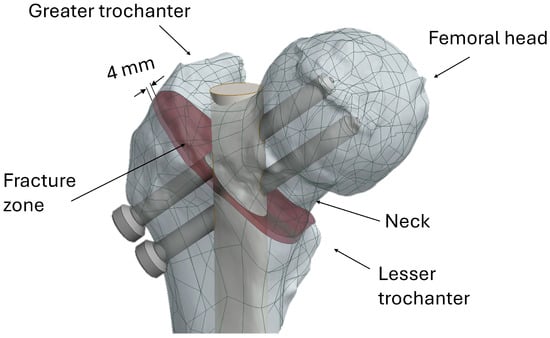
Figure 1
Open AccessReview
Developing Coastal Resilience to Climate Change in Panama Through Sustainable Concrete Applications
by
Kathleen J. Castillo-Martínez, Gisselle Guerra-Chanis and Yazmin L. Mack-Vergara
J. Compos. Sci. 2025, 9(11), 575; https://doi.org/10.3390/jcs9110575 (registering DOI) - 24 Oct 2025
Abstract
►▼
Show Figures
Panama, with nearly 3000 km of coastline and half its population living in coastal zones, faces high vulnerability to sea level rise, flooding, and extreme events. The most vulnerable areas include low-lying coastal provinces such as Panama, Colón, and Chiriquí. This review explores
[...] Read more.
Panama, with nearly 3000 km of coastline and half its population living in coastal zones, faces high vulnerability to sea level rise, flooding, and extreme events. The most vulnerable areas include low-lying coastal provinces such as Panama, Colón, and Chiriquí. This review explores the use of sustainable concrete to address the effects of climate change in Panama towards coastal resilience. The methodology combined a bibliometric analysis using VOSviewer, a systematic literature review (2015–2025) of 99 sources including regulations and technical standards, and a socioeconomic SWOT analysis to assess adoption drivers and barriers. A 2050 permanent inundation map was examined to identify vulnerable areas, and an inventory of concrete-based protection structures was developed. The results highlight that concrete is already used in Panama for coastal resilience through structures such as breakwaters, dolos, and Xbloc units. However, as the country still needs to expand its coastal protection infrastructure, there is a crucial opportunity to implement lower-impact, sustainable concrete alternatives that minimize environmental burdens while ensuring long-term durability and performance. Sustainable options, including supplementary cementitious materials (SCMs), recycled aggregates, and CO2 injection technologies, demonstrate strong mitigation potential, with national initiatives such as Vertua, Greentec, and Argos pozzolan offering early pathways. The conclusions emphasize the need to expand sustainable concrete applications, integrate nature-based solutions, and strengthen Panama’s regulatory and technical capacity to achieve resilient, low-carbon coastal infrastructure.
Full article
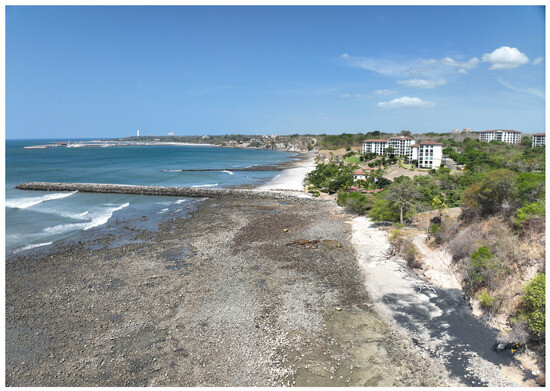
Figure 1
Open AccessArticle
Prediction of Adiabatic Temperature Rise of Concrete Containing Fly Ash Using On-Site Measurement and Multi-Scale Modeling
by
Nawaf S. Alsulami and Hung-Liang (Roger) Chen
J. Compos. Sci. 2025, 9(11), 574; https://doi.org/10.3390/jcs9110574 (registering DOI) - 24 Oct 2025
Abstract
In this study, an experimental adiabatic temperature rise (ATR) measurement and a multi-scale analytical approach were investigated for concrete containing Class F fly ash (FA). A half-meter (0.5 m) insulated cube was developed to measure the ATR. ATR calorimetry was used to verify
[...] Read more.
In this study, an experimental adiabatic temperature rise (ATR) measurement and a multi-scale analytical approach were investigated for concrete containing Class F fly ash (FA). A half-meter (0.5 m) insulated cube was developed to measure the ATR. ATR calorimetry was used to verify the applicability of the 0.5 m insulated cube. The ATRs were obtained by calculating the heat loss from the cube. Besides the insulated cube and adiabatic calorimetry, a multi-scale hydration model was programmed to predict the ATR from the chemical composition of the cementitious materials and mix designs. The model consists of two parts; the first part is for the Portland cement (PC) hydration reaction, and the second part is for the FA reaction. The analytical model was verified using ordinary PC and FA concrete mixes, and the ATR predictions compared well with the experimental measurements. The proposed methods proved to be a reliable alternative approach to obtain the ATR of a concrete mix containing FA. The developed 0.5 m insulated cube offers a more practical and economical approach for estimating the ATR while maintaining accuracy comparable to large-scale cubes, making it suitable for both field and laboratory applications. The study integrates on-site measurements with multi-scale analytical modeling to provide a better understanding of the hydration behavior and temperature development in FA-blended concrete.
Full article
(This article belongs to the Section Composites Modelling and Characterization)
►▼
Show Figures

Figure 1
Open AccessArticle
Investigations of Edge Cutting Effects on Mechanical Behaviors of 3D Braided Composites with Different Braiding Angles
by
Yafei Bai, Zhen Zhang, Tao Liu, Ziyi Wu, Haolong Zhang, Ruixing Zhu, Yue Chen, Yiwei Ouyang and Jingjing Dong
J. Compos. Sci. 2025, 9(11), 573; https://doi.org/10.3390/jcs9110573 (registering DOI) - 24 Oct 2025
Abstract
Three-dimensional braided composites (3DBCs) exhibit broad application prospects in the aerospace field due to their excellent mechanical properties. Considering that composites require cutting processing during real applications, this study employs a combination of experimental and finite element analysis methods to investigate the influence
[...] Read more.
Three-dimensional braided composites (3DBCs) exhibit broad application prospects in the aerospace field due to their excellent mechanical properties. Considering that composites require cutting processing during real applications, this study employs a combination of experimental and finite element analysis methods to investigate the influence of edge cutting on the compressive and flexural properties of 3DBCs. In the finite element model, full-scale mesostructural models with intact and edge-cut structures were constructed based on identical unit cell size parameters. The findings reveal that the effect of edge cutting on composite mechanical properties depends on the braiding angle, primarily because the deformation resistance of braided yarns varies with different braiding angles. However, the influence mechanisms of edge cutting on braided composites with large braiding angles differ between compressive and flexural loading modes. The results of this study can provide a reference for the practical application of 3DBCs.
Full article
(This article belongs to the Topic Numerical Simulation of Composite Material Performance)
►▼
Show Figures

Figure 1
Open AccessArticle
Mechanical Performance of Pultruded and Compression-Molded CFRTP Laminates: A Comparative Study
by
James C. Haller, Jr., Jacob C. Clark and James T. Gayton
J. Compos. Sci. 2025, 9(10), 572; https://doi.org/10.3390/jcs9100572 - 17 Oct 2025
Abstract
In this work, the mechanical performance of unidirectional thermoplastic laminates produced via a proprietary non-reactive thermoplastic pultrusion system known as the continuous forming machine (CFM) was compared to the mechanical performance of similar laminates produced via compression-molding in a heated platen press. Using
[...] Read more.
In this work, the mechanical performance of unidirectional thermoplastic laminates produced via a proprietary non-reactive thermoplastic pultrusion system known as the continuous forming machine (CFM) was compared to the mechanical performance of similar laminates produced via compression-molding in a heated platen press. Using commercially available pre-impregnated unidirectional thermoplastic tapes as the material feedstock for both production methods, a comparison of mechanical performance was executed for six separate material systems ranging from commodity-grade (e.g., polypropylene) to aerospace-grade (e.g., low-melt polyaryletherketone) polymer systems. Mechanical performance was evaluated and compared through tensile testing, compression testing, and short beam strength testing in a universal testing machine. The continuous fiber-reinforced thermoplastic (CFRTP) laminates were composed solely of unidirectional plies and were tested in the longitudinal material orientation. Through testing, it was found that the laminates produced on the proprietary thermoplastic pultrusion platform exhibited mechanical performance characteristics equivalent with those of the laminates produced using heated compression-molding. Furthermore, comparisons to values found in the literature were performed, demonstrating the viability of the CFM’s novel manufacturing process to pultrude thermoplastic parts for axially loaded applications.
Full article
(This article belongs to the Special Issue Advances in Continuous Fiber Reinforced Thermoplastic Composites)
►▼
Show Figures

Figure 1
Open AccessReview
Environmentally Friendly PLA-Based Conductive Composites: Electrical and Mechanical Performance
by
Nassima Naboulsi, Fatima Majid and Mohamed Louzazni
J. Compos. Sci. 2025, 9(10), 571; https://doi.org/10.3390/jcs9100571 - 16 Oct 2025
Abstract
This review investigates recent progress in the field of PLA-based conductive composites for 3D printing. First, it introduces PLA as a biodegradable thermoplastic polymer, describing its processing and recycling methods and highlighting its environmental advantages over conventional polymers. In order to evaluate its
[...] Read more.
This review investigates recent progress in the field of PLA-based conductive composites for 3D printing. First, it introduces PLA as a biodegradable thermoplastic polymer, describing its processing and recycling methods and highlighting its environmental advantages over conventional polymers. In order to evaluate its printability, PLA is briefly compared to other commonly used thermoplastics in additive manufacturing. The review then examines the incorporation of conductive fillers such as carbon black, carbon nanotubes, graphene, and metal particles into the PLA matrix, with a particular focus on the percolation threshold and its effect on conductivity. Critical challenges such as filler dispersion, agglomeration, and conductivity anisotropy are also highlighted. Recent results are summarized to identify promising formulations that combine improved electrical performance with acceptable mechanical integrity, while also emphasizing the structural and morphological characteristics that govern these properties. Finally, potential applications in the fields of electronics, biomedicine, energy, and electromagnetic shielding are discussed. From an overall perspective, the review highlights that while PLA-based conductive composites show great potential for sustainable functional materials, further progress is needed to improve reproducibility, optimize processing parameters, and ensure reliable large-scale applications.
Full article
(This article belongs to the Section Composites Applications)
►▼
Show Figures

Figure 1
Open AccessArticle
Low Poisson’s Ratio Measurement on Composites Based on DIC and Frequency Analysis on Tensile Tests
by
Luis Felipe-Sesé, Andreas Kenf, Sebastian Schmeer, Elías López-Alba and Francisco Alberto Díaz
J. Compos. Sci. 2025, 9(10), 570; https://doi.org/10.3390/jcs9100570 - 16 Oct 2025
Abstract
Accurate determination of elastic properties, especially Poisson’s ratio, is crucial for the design and modeling of composite materials. Traditional methods often struggle with low strain measurements and non-uniform strain distributions inherent in these anisotropic materials. This research work introduces a novel methodology that
[...] Read more.
Accurate determination of elastic properties, especially Poisson’s ratio, is crucial for the design and modeling of composite materials. Traditional methods often struggle with low strain measurements and non-uniform strain distributions inherent in these anisotropic materials. This research work introduces a novel methodology that integrates Digital Image Correlation (DIC) with frequency analysis techniques to improve the precision of Poisson’s ratio determination during tensile tests, particularly at low strain ranges. The focus is on the evaluation of two distinct frequency-based approaches: Phase-Based Motion Magnification (PBMM) and Lock-in filtering. DIC + PBMM, while promising for motion amplification, encountered specific challenges in this application, particularly at very low strain amplitudes, leading to increased variability and computational demands. In contrast, the DIC + Lock-in filtering method proved highly effective. It provided stable, filtered strain distributions, significantly reducing measurement uncertainty compared to traditional DIC and other conventional methods like strain gauges and Video Extensometers. This study demonstrates the robust potential of Lock-in filtering for characterizing subtle periodic mechanical behaviors leading to a reduction of approximately 70% in the standard deviation of the measurement. This work lays a strong foundation for more precise and reliable material characterization, crucial for advancing composite design and engineering applications.
Full article
(This article belongs to the Special Issue Editorial Board Members’ Collection Series: Modeling and Simulation of Composite Materials)
►▼
Show Figures

Figure 1
Open AccessArticle
The Effect of Calcium Stearate Additives in Concrete on Mass Transfer When Exposed to Aspergillus niger Fungi
by
Viktoriya S. Konovalova, Konstantin B. Strokin, Aleksey A. Galtsev and Denis G. Novikov
J. Compos. Sci. 2025, 9(10), 569; https://doi.org/10.3390/jcs9100569 - 15 Oct 2025
Abstract
Understanding and predicting the damage to concrete caused by microorganisms in aquatic environments is challenging, highlighting the need for effective, simple, and inexpensive preventative methods. This paper presents the results of a study on the effect of calcium stearate addition on the kinetics
[...] Read more.
Understanding and predicting the damage to concrete caused by microorganisms in aquatic environments is challenging, highlighting the need for effective, simple, and inexpensive preventative methods. This paper presents the results of a study on the effect of calcium stearate addition on the kinetics of mass transfer processes occurring in cement stone exposed to Aspergillus niger fungi under humid conditions. Calcium stearate was added into the cement mix during sample preparation at concentrations of 0.5% and 1% by cement weight. After curing, the cement stone surfaces were inoculated with Aspergillus niger. To investigate mass transfer processes during biodegradation, the samples were immersed in water. Calcium leaching from the cement stone was quantified using complexometric titration of the water, while the calcium content within the cement stone was determined by derivatographic analysis. The quantitative indicators of calcium leaching in water from cement stone with calcium stearate additives were 2.5 times lower. The profiles of calcium concentrations in the thickness of cement samples demonstrated an increase in the intensity of mass transfer under the influence of fungi and a significant decrease in the processes in hydrophobic cement stone. The values of the mass conductivity coefficients for fungal-infected samples in water differed by two orders of magnitude from 10−9 and 10−11 [m2/s] for conventional and hydrophobic concrete. The mass transfer parameters (flow density, mass conductivity coefficients, and mass transfer coefficients) revealed a 3-fold slowdown in mass transfer processes during fungal exposure in cement stone with a hydrophobic additive compared with control samples. A mathematical model of concrete biocorrosion was used to predict the durability of concrete under humid conditions with fungal exposure. The predicted maintenance-free service life of concrete without additives is 15 years, whereas for hydrophobic concrete, it is 25 to 30 years. The research results are used in the design of concrete structures in conditions of high humidity, in the development of new compositions of hydrophobic concretes, to predict the service life of concrete structures, and in the creation of methods for preventing biological damage to concrete structures.
Full article
(This article belongs to the Special Issue Structural Design, Health Monitoring and Performance Evaluation of Composite Materials)
►▼
Show Figures

Figure 1
Open AccessArticle
Development of Carbide-Reinforced Al-7075 Multi-Layered Composites via Friction Stir Additive Manufacturing
by
Adeel Hassan, Khurram Altaf, Mokhtar Che Ismail, Srinivasa Rao Pedapati, Roshan Vijay Marode, Imtiaz Ali Soomro and Naveed Ahmed
J. Compos. Sci. 2025, 9(10), 568; https://doi.org/10.3390/jcs9100568 - 15 Oct 2025
Abstract
Friction stir additive manufacturing (FSAM) is a promising solid-state technique for fabricating high-strength aluminum alloys, such as Al-7075, which are difficult to process using conventional melting-based additive manufacturing (AM) methods. This study investigates the mechanical properties and tool wear behavior of seven-layered Al-7075
[...] Read more.
Friction stir additive manufacturing (FSAM) is a promising solid-state technique for fabricating high-strength aluminum alloys, such as Al-7075, which are difficult to process using conventional melting-based additive manufacturing (AM) methods. This study investigates the mechanical properties and tool wear behavior of seven-layered Al-7075 multi-layered composites reinforced with silicon carbide (SiC) and titanium carbide (TiC) fabricated via FSAM. Microstructural analysis confirmed defect-free multi-layered composites with a homogeneous distribution of SiC and TiC reinforcements in the nugget zone (NZ), although particle agglomeration was observed at the bottom of the pin-driven zone (PDZ). The TiC-reinforced composite exhibited finer grains than the SiC-reinforced composite in both as-welded and post-weld heat-treated (PWHT) conditions, achieving a minimum grain size of 1.25 µm, corresponding to a 95% reduction compared to the base metal. The TiC-reinforced multi-layered composite demonstrated superior mechanical properties, attaining a microhardness of 93.7 HV and a UTS of 263.02 MPa in the as-welded condition, compared to 88.6 HV and 236.34 MPa for the SiC-reinforced composite. After PWHT, the TiC-reinforced composite further improved to 159.12 HV and 313.46 MPa UTS, along with a higher elongation of 11.14% compared to 7.5% for the SiC-reinforced composite. Tool wear analysis revealed that SiC reinforcement led to greater tool degradation, resulting in a 1.17% weight loss. These findings highlight the advantages of TiC reinforcement in FSAM, offering enhanced mechanical performance with reduced tool wear in multi-layered Al-7075 composites.
Full article
(This article belongs to the Special Issue Effect of Processing Techniques on the Characterization of Alloys Composites and Hybrids)
►▼
Show Figures

Figure 1
Open AccessArticle
Analytical and Numerical Investigation of Vibration Characteristics in Shear-Deformable FGM Beams
by
Murat Çelik, Erol Demirkan and Ahmet Feyzi Yıldırım
J. Compos. Sci. 2025, 9(10), 567; https://doi.org/10.3390/jcs9100567 - 15 Oct 2025
Abstract
In this study, the free vibration characteristics of a functionally graded (FG) shear-deformable Timoshenko beam were investigated both analytically and numerically. The work is notable for its significant contribution to the literature, particularly in addressing analytically challenging problems related to complex FGM structures
[...] Read more.
In this study, the free vibration characteristics of a functionally graded (FG) shear-deformable Timoshenko beam were investigated both analytically and numerically. The work is notable for its significant contribution to the literature, particularly in addressing analytically challenging problems related to complex FGM structures using advanced computer-aided finite element methods. For the analytical approach, the governing equations and associated boundary conditions were derived using Hamilton’s principle of minimum potential energy. These equations were then solved using the Navier solution method to determine the natural frequencies of the beam. In the numerical analysis, a 3D FG beam model was developed in the ABAQUS finite element software (2023, Dassault Systèmes, Providence, RI, USA)using the second-order hexahedral (HEX20/C3D20) and 1D three-node quadratic beam (B32) elements. The material gradation was defined layer-by-layer along the thickness direction in accordance with the rule of mixtures. Modal analysis was subsequently performed to extract the natural frequency values. The results show a high level of agreement between the analytical and numerical solutions. and were consistent with previously published studies in the literature.
Full article
(This article belongs to the Special Issue Composite Materials for Civil Engineering Applications)
►▼
Show Figures

Figure 1
Open AccessArticle
Performance and Preparation of Styrene-Butadiene Copolymer Modified Polypropylene Matte Films
by
Kang Yang, Yu-Long Ma, Jin-Long Lv, Zhang Yi, Shu Zeng, Ju-Heng Wang and Xiao-Xiao Huang
J. Compos. Sci. 2025, 9(10), 566; https://doi.org/10.3390/jcs9100566 - 15 Oct 2025
Abstract
The demand for high-performance polypropylene (PP) films in high-end packaging applications has been growing rapidly. However, Traditional polypropylene (PP) films are limited in application by their inadequate mechanical strength, heat-sealing performance, and matte properties. Hence, in this study, styrene-butadiene copolymer-modified polypropylene (PP) matte
[...] Read more.
The demand for high-performance polypropylene (PP) films in high-end packaging applications has been growing rapidly. However, Traditional polypropylene (PP) films are limited in application by their inadequate mechanical strength, heat-sealing performance, and matte properties. Hence, in this study, styrene-butadiene copolymer-modified polypropylene (PP) matte films using styrene-butadiene copolymer (SB) as a modifier were successfully prepared. A comprehensive characterization of the films’ optical, mechanical, thermal, and processing properties was conducted using specialized instrumentation. Capillary rheometry revealed that the melt viscosity of the PP/SB blends decreased with increasing shear rate, demonstrating typical pseudoplastic behavior. Differential scanning calorimetry (DSC) showed single melting and crystallization peaks, indicating excellent compatibility between PP and SB. The optimal performance was achieved with 7.00 wt% SB, resulting in a film with a light transmittance of 92.08%, a haze of 66.40%, and a gloss of 3.63 GU. This formulation also yielded more uniform tensile strength and elongation in both longitudinal and transverse directions, and reduced the heat-sealing temperature to 101 °C, significantly lower than the 111 °C required for pure PP. Overall, the SB-modified PP films exhibited excellent mechanical strength, enhanced heat sealability, and superior matte properties, highlighting their significant potential for high-end packaging applications.
Full article
(This article belongs to the Section Polymer Composites)
►▼
Show Figures

Figure 1
Open AccessArticle
Sustainable Reprocessing of Thermoset Composite Waste into Thermoplastics: A Polymer Blend Approach for Circular Material Design
by
Hasan Kasim, Yu-Chao Shih, Selvum Pillay and Haibin Ning
J. Compos. Sci. 2025, 9(10), 565; https://doi.org/10.3390/jcs9100565 - 14 Oct 2025
Abstract
Thermoset composites provide excellent strength but pose major recycling challenges due to their crosslinked structure. In this study, epoxy–polyurethane–glass fiber (EPG) wastes were mechanically recycled into low-density polyethylene (LDPE), high-density polyethylene (HDPE), and polyamide-6 (PA6) matrices to produce second-generation thermoplastic composites (STCs). Fillers
[...] Read more.
Thermoset composites provide excellent strength but pose major recycling challenges due to their crosslinked structure. In this study, epoxy–polyurethane–glass fiber (EPG) wastes were mechanically recycled into low-density polyethylene (LDPE), high-density polyethylene (HDPE), and polyamide-6 (PA6) matrices to produce second-generation thermoplastic composites (STCs). Fillers at 10–50 wt% were processed by single-screw extrusion and compression molding, and the resulting composites were comprehensively characterized. For LDPE, the tensile modulus increased by ~286–589% and tensile strength increased by 40–47% at 20–30 wt% loading, though ductility decreased at higher levels. HDPE composites showed a ~347% rise in modulus and ~24% increase in strength, but performance declined with more than 40 wt% filler. PA6 offered the most balanced outcome, retaining ~70% of its neat tensile strength while achieving an ~300% modulus improvement at 40 wt% loading. Thermal stability was strongly enhanced, with char residue at 700 °C rising from 0.4% to 38.7% in PA6 and from ~2.5% to 33–46% in polyolefins. In contrast, crystallinity decreased (e.g., LDPE 62.2% → 23.7%), and impact strength dropped at a loading above 30 wt%. Overall, the results demonstrate that EPG wastes can be reprocessed into functional composites without compatibilizers, with PA6 providing the most robust property retention at high filler contents.
Full article
(This article belongs to the Special Issue Advances in Continuous Fiber Reinforced Thermoplastic Composites)
►▼
Show Figures

Figure 1
Open AccessArticle
Scalable Production of Boron Nitride-Coated Carbon Fiber Fabrics for Improved Oxidation Resistance
by
Cennet Yıldırım Elçin, Muhammet Nasuh Arık, Kaan Örs, Uğur Nakaş, Zeliha Bengisu Yakışık Özgüle, Özden Acar, Salim Aslanlar, Özkan Altay, Erdal Çelik and Korhan Şahin
J. Compos. Sci. 2025, 9(10), 564; https://doi.org/10.3390/jcs9100564 - 14 Oct 2025
Abstract
This study aimed to develop an industrially scalable coating route for enhancing the oxidation resistance of carbon fiber fabrics, a critical requirement for next-generation aerospace and high-temperature composite structures. To achieve this goal, synthesis of hexagonal boron nitride (h-BN) layers was achieved via
[...] Read more.
This study aimed to develop an industrially scalable coating route for enhancing the oxidation resistance of carbon fiber fabrics, a critical requirement for next-generation aerospace and high-temperature composite structures. To achieve this goal, synthesis of hexagonal boron nitride (h-BN) layers was achieved via a single wet step in which the fabric was impregnated with an ammonia–borane/THF solution and subsequently nitrided for 2 h at 1000–1500 °C in flowing nitrogen. Thermogravimetric analysis coupled with X-ray diffraction revealed that amorphous BN formed below ≈1200 °C and crystallized completely into (002)-textured h-BN (with lattice parameters a ≈ 2.50 Å and c ≈ 6.7 Å) once the dwell temperature reached ≥1300 °C. Complementary XPS, FTIR and Raman spectroscopy confirmed a near-stoichiometric B:N ≈ 1:1 composition and the elimination of O–H/N–H residues as crystallinity improved. Low-magnification SEM (100×) confirmed the uniform and large-area coverage of the BN layer on the carbon fiber tows, while high-magnification SEM revealed a progressive densification of the coating from discrete nanospheres to a continuous nanosheet barrier on the fibers. Oxidation tests in flowing air shifted the onset of mass loss from 685 °C for uncoated fibers to 828 °C for the coating produced at 1400 °C; concurrently, the peak oxidation rate moved ≈200 °C higher and declined by ~40%. Treatment at 1500 °C conferred no additional benefit, indicating that 1400 °C provides the optimal balance between full crystallinity and limited grain coarsening. The resulting dense h-BN film, aided by an in situ self-healing B2O3 glaze above ~800 °C, delayed carbon fiber oxidation by ≈140 °C. Overall, the process offers a cost-effective, large-area alternative to vapor-phase deposition techniques, positioning BN-coated carbon fiber fabrics for robust service in extreme oxidative environments.
Full article
(This article belongs to the Section Fiber Composites)
►▼
Show Figures

Figure 1
Open AccessArticle
Microstructure and Hydrogen Storage Properties of Composites Derived from Oxidized Alloy Glass in the System of Zr-Pd-Pt
by
Masakuni Ozawa, Naoya Katsuragawa, Masatomo Hattori and Hidemi Kato
J. Compos. Sci. 2025, 9(10), 563; https://doi.org/10.3390/jcs9100563 - 13 Oct 2025
Abstract
A study on the hydrogen storage of composite materials derived from alloy glass in the system of Zr-Pd-Pt was conducted through the integration of multiple methodologies. The alloy following heat treatment in air at temperatures ranging from 280 °C to 800 °C showed
[...] Read more.
A study on the hydrogen storage of composite materials derived from alloy glass in the system of Zr-Pd-Pt was conducted through the integration of multiple methodologies. The alloy following heat treatment in air at temperatures ranging from 280 °C to 800 °C showed a precipitated structure comprising metallic Pd-Pt particles and a ZrO2 matrix. In the sample treated at 280 °C, the spillover phenomenon of absorbed hydrogen was suggested. The plateau region of the hydrogen pressure–concentration (PCT) isotherm showed the gradient profiles for the samples oxidized at 400 °C, 600 °C, and 800 °C. In the equilibrium absorption process, the ΔH° of approximately 38 kJ/mol was proposed, and the highest storage of hydrogen was H/Pd = 0.61 by the sample oxidized in air at 600 °C. The temperature programmed reduction (TPR) results exhibited rapid hydrogen release behavior at temperatures ranging from 50 °C to 65 °C. The findings offer novel insights into the microstructure, fabrication process, and overall hydrogen absorption/desorption properties of the composites prepared from a Zr-Pd-Pt alloy glass.
Full article
(This article belongs to the Special Issue Composite Materials for Hydrogen Storage)
►▼
Show Figures

Figure 1
Open AccessArticle
Processing of Steelmaking Slags into Artificial Granular Aggregate for Concrete by Forced Carbonation
by
Tamara Bakhtina, Nikolay Lyubomirskiy, Alexey Gusev, Aleksandr Bakhtin, Ivan Tyunyukov, Valentina Volchenkova and Wolfgang Linert
J. Compos. Sci. 2025, 9(10), 562; https://doi.org/10.3390/jcs9100562 - 13 Oct 2025
Abstract
This article presents the results of experimental studies to determine the possibility of processing steelmaking slags into an artificial granulated filler for concrete by the method of forced carbonization and the stabilization of the obtained filler in the concrete matrix over time. The
[...] Read more.
This article presents the results of experimental studies to determine the possibility of processing steelmaking slags into an artificial granulated filler for concrete by the method of forced carbonization and the stabilization of the obtained filler in the concrete matrix over time. The utilization of metallurgical waste and technogenic CO2 is a global problem. In this work, the method of the granulation of finely ground converter (BOF) and electric steelmaking (EAF) slags was used to obtain artificial granules and their subsequent forced carbonization in the developed laboratory carbonization chamber. Within the framework of this study, the quantitative binding of CO2 by granules based on BOF and EAF slags was established, which amounted to 5.2 and 7.8% by weight, respectively. It was determined that the mass loss during crushability testing, indirectly characterizing the actual compressive strength of the granule material, depending on the type of slag and grain size, ranges from 13.6 to 42.3%, which is quite sufficient for using this artificial filler in concrete production. Based on the developed batches of fillers, concretes were obtained that have a compressive strength of 30.7 to 37.8 MPa in 28 days of hardening, which generally corresponds to concrete class B25. The preliminary studies and the results obtained indicate the prospects of processing steel slags into artificial granulated fillers by forced carbonization and using this product in concrete production.
Full article
(This article belongs to the Special Issue Novel Cement and Concrete Materials)
►▼
Show Figures

Figure 1
Open AccessArticle
Bio-Derived Porous Carbon/Nickel Oxide Composite for High-Performance Energy Storage Applications
by
Aigerim R. Seitkazinova, Meruyert Nazhipkyzy, Kenes Kudaibergenov, Almagul Issanbekova, Nurgul S. Bergeneva, Alisher Abdisattar and Meiramgul Kyzgarina
J. Compos. Sci. 2025, 9(10), 561; https://doi.org/10.3390/jcs9100561 - 13 Oct 2025
Abstract
The development of bio-derived composites represents a sustainable and cost-effective strategy for advanced energy storage applications. In this work, a porous carbon/nickel oxide (NiO) composite was synthesized from orange peel via carbonization at 500 °C followed by KOH activation at 700 °C and
[...] Read more.
The development of bio-derived composites represents a sustainable and cost-effective strategy for advanced energy storage applications. In this work, a porous carbon/nickel oxide (NiO) composite was synthesized from orange peel via carbonization at 500 °C followed by KOH activation at 700 °C and subsequent hydrothermal NiO modification. The resulting material exhibited a hierarchical porous structure with a high specific surface area (2120 m2 g−1 for OP_500_700 and 1968 m2 g−1 for NiO-modified OP_500_700_0.1M), with both values being significantly higher than that of the non-activated OP_500 (3.40–18.12 m2 g−1). Electrochemical evaluation revealed that the NiO-functionalized composite achieved a specific capacitance of 306.0 F g−1 at 5 mV s−1 and 281.5 F g−1 at 2 A g−1, surpassing the pristine activated carbon (281.9 F g−1 and 259.6 F g−1, respectively). In addition, both electrodes demonstrated excellent cycling stability, retaining more than 80% capacitance after 5000 charge–discharge cycles at a high current density of 20 A g−1, while the NiO-modified electrode further benefited from a self-activation effect leading to >100% retention. These findings emphasize the synergistic effects of hierarchical porosity and NiO pseudocapacitance, establishing orange peel-derived carbon/NiO composites as scalable and sustainable electrode materials for next-generation supercapacitors.
Full article
(This article belongs to the Section Composites Applications)
►▼
Show Figures

Graphical abstract
Open AccessArticle
Optical and Thermal Studies, Isothermal Crystallization Kinetics and Mechanical Properties of Poly(lactic acid) Nanocomposites Based on Hybrid Lignin/MWCNT Nanomaterial
by
Andreas Pitsavas, Rafail O. Ioannidis, Sofia Makri, Stefania Koutsourea, Alexios Grigoropoulos, Ioanna Deligkiozi, Alexandros Zoikis-Karathanasis, Eleftheria Xanthopoulou and Dimitrios N. Bikiaris
J. Compos. Sci. 2025, 9(10), 560; https://doi.org/10.3390/jcs9100560 - 13 Oct 2025
Abstract
A depth study of optical, isothermal crystallization and mechanical properties was conducted on a series of poly(lactic acid) (PLA) nanocomposites based on lignin/multi-walled carbon nanotubes (MWCNTs) hybrid nanomaterial. The preparation was performed via solution casting followed by melt mixing. For comparison reasons, a
[...] Read more.
A depth study of optical, isothermal crystallization and mechanical properties was conducted on a series of poly(lactic acid) (PLA) nanocomposites based on lignin/multi-walled carbon nanotubes (MWCNTs) hybrid nanomaterial. The preparation was performed via solution casting followed by melt mixing. For comparison reasons, a group of PLA/lignin polymeric materials were prepared. Infrared spectroscopy (FTIR) did not reveal any significant impact on the main peaks of the nanocomposites by the incorporation of the additives. The optical properties were strongly affected by the content of the additive, as long as the thermal transitions parameters as evaluated from the differential scanning calorimetry (DSC) show important differences between cold and melt crystallization. X-ray diffraction (XRD) showed the semicrystalline behavior of the materials, while during isothermal crystallization experiments, the hybrid conductive nanomaterial acted as nucleation agent by promoting crystallization. Under evaluation of the mechanical properties, Young’s modulus tensile parameter increased significantly while the content of the hybrid nanomaterial increased, and the bending experiments of the materials with low content of the additives did not break. Thus, these substrates could be promising candidates for engineering applications, such as printed electronics.
Full article
(This article belongs to the Section Nanocomposites)
►▼
Show Figures

Graphical abstract

Journal Menu
► ▼ Journal Menu-
- J. Compos. Sci. Home
- Aims & Scope
- Editorial Board
- Reviewer Board
- Topical Advisory Panel
- Instructions for Authors
- Special Issues
- Topics
- Sections & Collections
- Article Processing Charge
- Indexing & Archiving
- Editor’s Choice Articles
- Most Cited & Viewed
- Journal Statistics
- Journal History
- Journal Awards
- Conferences
- Editorial Office
Journal Browser
► ▼ Journal BrowserHighly Accessed Articles
Latest Books
E-Mail Alert
News
Topics
Topic in
J. Compos. Sci., Materials, Polymers
Advances in Rubbers, Elastomers and Resins for Leading Edge Technologies
Topic Editors: Marianella Hernández Santana, Héctor Aguilar Bolados, Miguel Ángel López ManchadoDeadline: 31 October 2025
Topic in
Applied Sciences, J. Compos. Sci., Materials, Nanomaterials, Polymers
Multifunctional Porous Materials: Preparation, Structure, Modeling and Applications
Topic Editors: Huawei Zou, Shengtai ZhouDeadline: 20 December 2025
Topic in
Fibers, J. Compos. Sci., Materials, Polymers, Applied Mechanics
Advances in Fiber–Matrix Interface: Cohesion Enhancement, Characterization and Modeling of Interfacial Debonding
Topic Editors: Quentin Bourgogne, Hamid Zahrouni, Hubert ChapuisDeadline: 28 February 2026
Topic in
Materials, Ceramics, J. Compos. Sci.
New Advances in High-Performance Structural Ceramics and Their Composites
Topic Editors: Amparo Borrell, Rut Benavente, Rujie HeDeadline: 31 March 2026

Conferences
Special Issues
Special Issue in
J. Compos. Sci.
Optical–Electric–Magnetic Multifunctional Composite Materials
Guest Editor: Jiaolong LiuDeadline: 31 October 2025
Special Issue in
J. Compos. Sci.
3D Printing and Additive Manufacturing of Composites
Guest Editors: Alessio Vita, Iacopo BianchiDeadline: 30 November 2025
Special Issue in
J. Compos. Sci.
From Waste to Advance Composite Materials, 2nd Edition
Guest Editor: Farshid PahlevaniDeadline: 30 November 2025
Special Issue in
J. Compos. Sci.
Recent Progress in Hybrid Composites
Guest Editor: Chensong DongDeadline: 30 November 2025
Topical Collections
Topical Collection in
J. Compos. Sci.
Editorial Board Members’ Collection Series: Fibre Composite Materials
Collection Editors: Hom Nath Dhakal, Mazeyar Parvinzadeh Gashti, Esfandiar Pakdel


